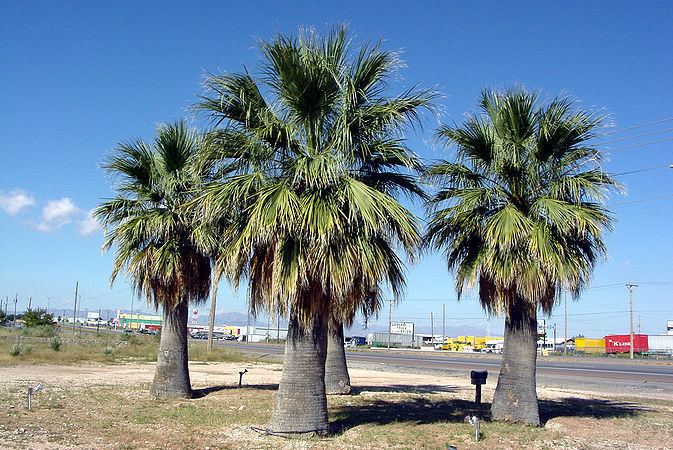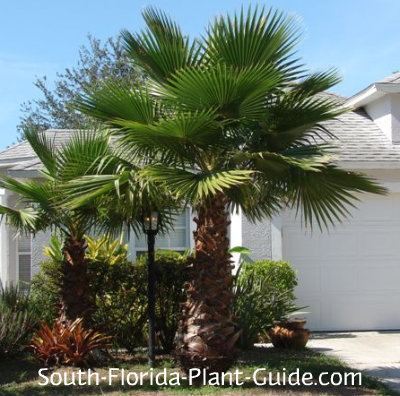Tribe Livistoneae Higher classification Livistoneae | Scientific name Washingtonia Rank Genus | |
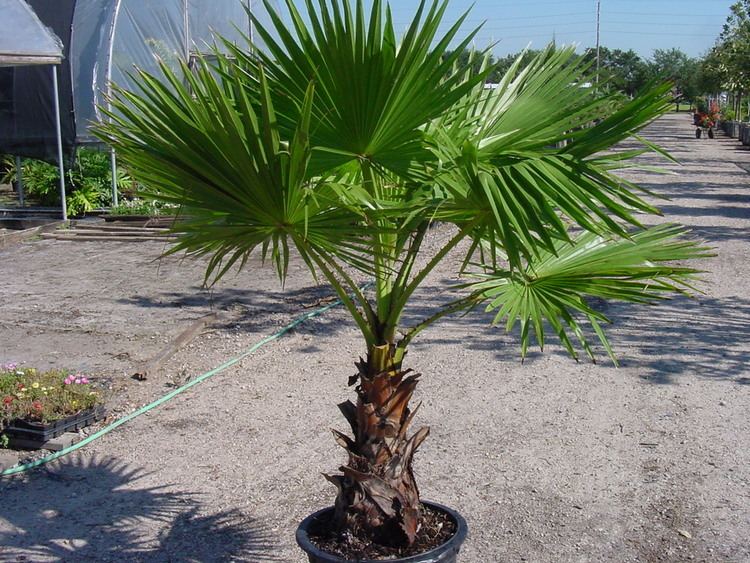 | ||
Lower classifications Washingtonia robusta, Washingtonia filifera | ||
How to plant a washingtonia robusta palm tree
Washingtonia is a genus of palms, native to the southwestern United States (in southern California, southwest Arizona, (Nevada) Texas) and northwest Mexico (in northern Baja California and Sonora). Both Washingtonia species are commonly cultivated across the Southern United States, the Middle East, southern Europe, and north Africa, where they have greatly hybridized.

They are fan palms (Corypheae tribe), with the leaves with a bare petiole terminating in a rounded fan of numerous leaflets. The flowers are in a dense inflorescence, with the fruits maturing into a small blackish-brown drupe 6–10 mm diameter with a thin layer of sweet flesh over the single seed.
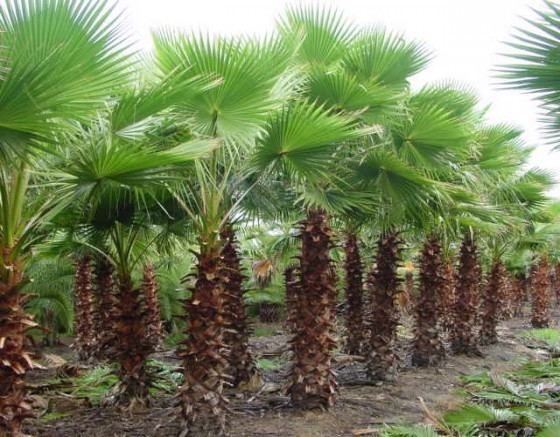
There are two species:
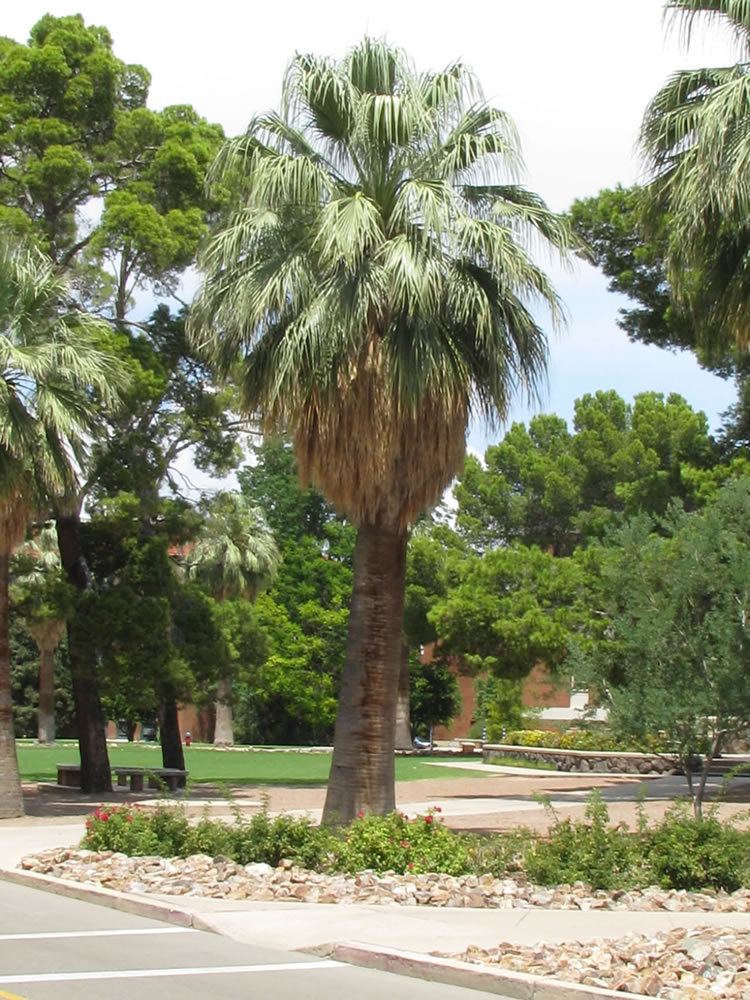
The fruit is edible, and was used by Native American people as a minor food source. They are also eaten by birds, which disperse the seeds in their droppings after digesting the fruit pulp. Washingtonia species are also used as food plants by the larvae of some Lepidoptera species, including Paysandisia archon.
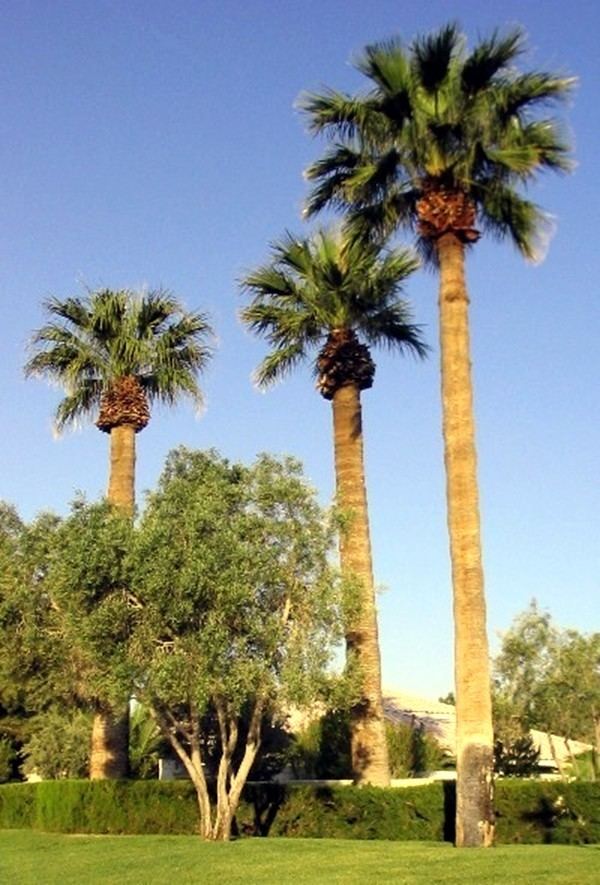
Both species are cultivated as ornamental trees, widely planted in California in particular, but also in Florida, extreme southwest Utah, Arizona, southern New Mexico, Texas, the Carolinas and the Mediterranean region in southern Europe and north Africa, parts of Australia, and the leeward sides of the Hawaiian Islands. The species is also attempted in cooler climates, such as Vancouver Island, western Oregon and Washington state, the Columbia Basin, and the milder parts of the southern British Isles. W. filifera is actually very hardy in a dry climate and able to survive brief temperatures in the vicinity of -15 °C (5 °F), provided the air and soil are not too wet, and the afternoon temperatures are not too cold. Intolerance of wet, prolonged cold is the main reason the filifera species cannot grow properly in temperate marine climates. W. robusta is less sensitive to moisture than filifera, but far more easily damaged by cold.
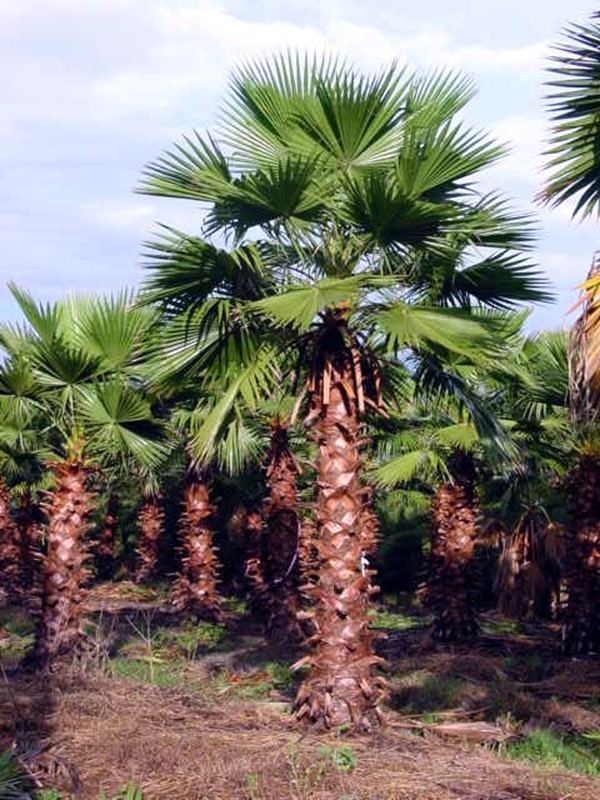
The genus is named after George Washington.
